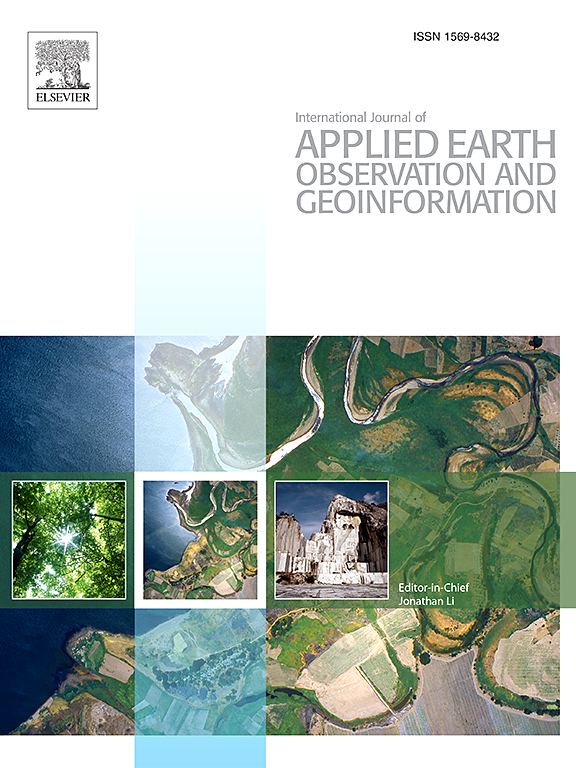大流行对中国特大城市热环境影响的建模——基于热异常变化的时空分析
IF 7.6
Q1 REMOTE SENSING
International journal of applied earth observation and geoinformation : ITC journal
Pub Date : 2025-02-01
DOI:10.1016/j.jag.2025.104396
引用次数: 0
摘要
受封锁政策和人类活动异常的影响,大流行等突发事件显著改变了城市热环境。然而,突发事件期间城市间和城市内热异常的时空变化及其驱动因素尚未得到充分的研究。本研究量化了2019冠状病毒病大流行之前和期间中国城市热环境的变化。基于z分数和多尺度地理加权回归模型,估计了不同程度流行病影响和驱动因素下城市不同土地利用方式的热异常变化和转移模式。在全年中,我们发现,尽管大流行在5%至35%的天数内显著降低了地表城市热岛强度,但在整个2020年没有显著变化。在突发公共卫生事件一级响应期间,受疫情影响较大的居住用地和商业用地地表温度分别下降了- 0.195°C和- 0.371°C,工业用地强热异常区和无热异常区的转移分别使热异常区和无热异常区增加了6.1%和1.4%。此外,热异常与大流行期间生物物理参数的变化高度相关。这些发现为突发事件引起的城市热环境波动提供了见解和缓解策略。本文章由计算机程序翻译,如有差异,请以英文原文为准。
Modeling the impact of pandemic on the urban thermal environment over megacities in China: Spatiotemporal analysis from the perspective of heat anomaly variations
Influenced by lockdown policies and anomalies in human activities, emergencies such as pandemic significantly altered the urban thermal environment. However, the spatiotemporal heat anomaly changes across and within cities during emergencies and their drivers have not been fully investigated. This study quantified the changes in the urban thermal environment in China before and during the COVID-19 pandemic. Based on z-scores and multiscale geographically weighted regression models, heat anomaly changes and transfer patterns of different land uses in cities with varying degrees of pandemic impact and drivers were estimated. During the entire year, we found that although the pandemic significantly reduced surface urban heat island intensity during 5 % to 35 % of days, it did not change significantly throughout 2020. During the first-level public health emergency response, the land surface temperatures of residential and commercial lands notably affected by the pandemic decreased by −0.195°C and −0.371°C, and the shifting of strong heat anomaly zones in industrial lands increased heat anomaly and no heat anomaly zones by 6.1 % and 1.4 %, respectively. Furthermore, thermal anomalies were highly correlated with changes in biophysical parameters during the pandemic. These findings provide insights and mitigation strategies for the fluctuations in the urban thermal environment caused by emergencies.
求助全文
通过发布文献求助,成功后即可免费获取论文全文。
去求助
来源期刊

International journal of applied earth observation and geoinformation : ITC journal
Global and Planetary Change, Management, Monitoring, Policy and Law, Earth-Surface Processes, Computers in Earth Sciences
CiteScore
12.00
自引率
0.00%
发文量
0
审稿时长
77 days
期刊介绍:
The International Journal of Applied Earth Observation and Geoinformation publishes original papers that utilize earth observation data for natural resource and environmental inventory and management. These data primarily originate from remote sensing platforms, including satellites and aircraft, supplemented by surface and subsurface measurements. Addressing natural resources such as forests, agricultural land, soils, and water, as well as environmental concerns like biodiversity, land degradation, and hazards, the journal explores conceptual and data-driven approaches. It covers geoinformation themes like capturing, databasing, visualization, interpretation, data quality, and spatial uncertainty.
 求助内容:
求助内容: 应助结果提醒方式:
应助结果提醒方式:


